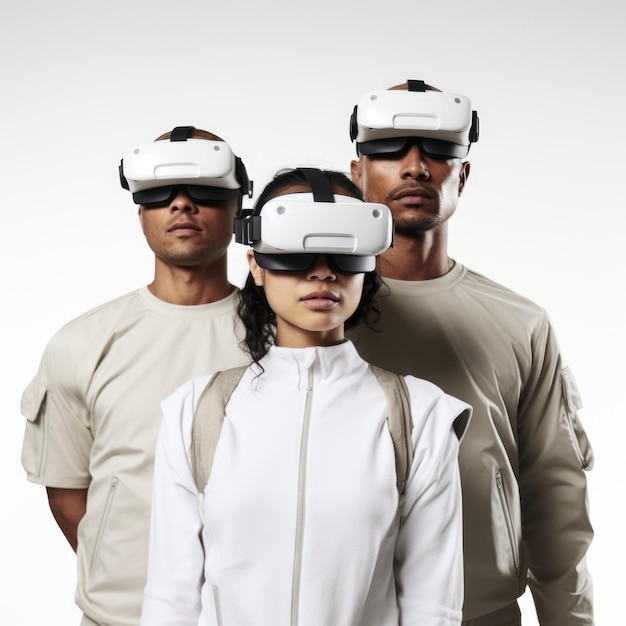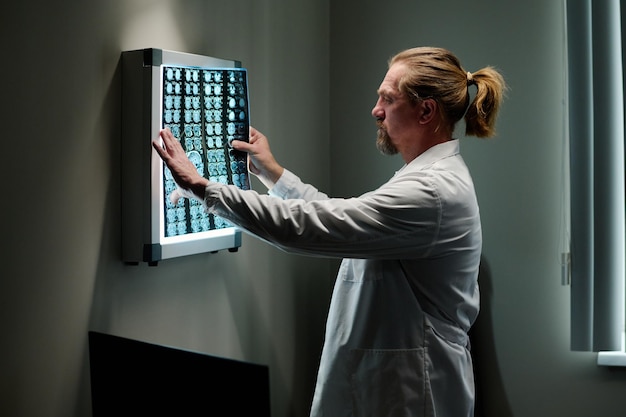The Future of Healthcare: Transforming Health Benefits in 2025

In 2025, the future of healthcare will be transformed by technology, with personalized and preventive health benefits driven by artificial intelligence, wearable devices, and telemedicine, enhancing accessibility and improving patient outcomes significantly.
The healthcare landscape is rapidly evolving, and by 2025, technology will have profoundly reshaped health benefits. Understanding these changes is crucial for employees, employers, and healthcare providers alike. This article explores how technology is transforming the future of healthcare: how technology is transforming health benefits in 2025, offering insights into what you can expect and how to prepare.
The Rise of Personalized Health Benefits
One of the most significant changes on the horizon is the shift towards personalized health benefits. No longer will generic plans suffice; instead, technology is enabling tailored healthcare experiences that cater to individual needs and preferences.
By leveraging data analytics and artificial intelligence, healthcare providers can offer benefits packages that are precisely aligned with an individual’s health profile, lifestyle, and risk factors.
Data-Driven Customization
Data is the cornerstone of personalized health benefits. Wearable devices, electronic health records, and even social media activity can provide valuable insights into a person’s health.
AI-Powered Recommendations
Artificial intelligence can analyze vast amounts of data to identify patterns and predict future health needs. This enables proactive interventions and personalized recommendations.
- Predictive Analytics: AI algorithms can predict potential health risks, such as the likelihood of developing chronic conditions like diabetes or heart disease.
- Personalized Wellness Programs: Based on individual health data, AI can recommend customized wellness programs.
- Optimized Treatment Plans: AI can assist doctors in creating treatment plans tailored to the patient’s specific genetic makeup and medical history.
- Real-Time Monitoring: Wearable devices and remote monitoring systems provide real-time data on vital signs, activity levels, and sleep patterns, enabling timely interventions.
These personalized approaches not only improve health outcomes but also increase employee engagement, as individuals feel more valued and understood by their healthcare providers.

Telemedicine: Expanding Access to Care
Telemedicine has already made significant strides in recent years, and its adoption is set to accelerate further by 2025. This technology leverages digital platforms to deliver healthcare services remotely, overcoming geographical barriers and increasing access to care.
From virtual consultations to remote monitoring, telemedicine is transforming how healthcare is delivered and managed.
Virtual Consultations and Monitoring
Telemedicine platforms enable patients to consult with doctors, specialists, and therapists from the comfort of their homes. This is particularly beneficial for individuals in rural areas or those with mobility issues.
Remote Patient Monitoring
With the help of wearable devices and connected health devices, healthcare providers can remotely monitor patients’ vital signs, medication adherence, and overall health. This allows for timely interventions and reduces the need for frequent in-person visits.
- Increased Convenience: Telemedicine eliminates the need for travel, reduces wait times, and offers greater flexibility in scheduling appointments.
- Improved Access: Telemedicine can reach underserved populations and provide access to specialists who may not be available locally.
- Cost Savings: Telemedicine can reduce healthcare costs by minimizing hospital readmissions.
- Enhanced Patient Engagement: Telemedicine platforms often include educational resources and communication tools, which can empower patients to take a more active role in their healthcare.
As telemedicine becomes more integrated into mainstream healthcare, it will play a vital role in improving health outcomes and reducing healthcare disparities.
AI and Machine Learning in Diagnostics
Artificial intelligence (AI) and machine learning (ML) are revolutionizing the field of diagnostics, enabling faster, more accurate, and more personalized diagnoses. By analyzing vast amounts of medical data, AI algorithms can detect patterns and anomalies that might be missed by human clinicians.
This technology is helping to improve the speed and accuracy of diagnoses, leading to better patient outcomes.
Advancements in Medical Imaging
AI-powered image recognition can analyze medical images, such as X-rays, MRIs, and CT scans, with incredible precision. This can help radiologists identify subtle signs of disease, such as tumors or fractures, at an early stage.
Predictive Diagnostics
Machine learning algorithms can analyze patient data to predict an individual’s risk of developing certain diseases. This enables proactive interventions and preventive care.
- Early Detection: AI can detect diseases like cancer at earlier stages, when treatment is more likely to be successful.
- Improved Accuracy: AI can reduce diagnostic errors by providing clinicians with additional insights and decision support.
- Personalized Treatment: AI can help doctors tailor treatment plans to the individual patient, based on their genetic profile and medical history.
- Reduced Costs: AI can streamline the diagnostic process, reducing the need for expensive and time-consuming tests.
The integration of AI and ML in diagnostics is not only improving patient care but also reducing healthcare costs by enabling more efficient and effective use of resources.

The Role of Wearable Technology
Wearable technology is becoming an increasingly integral part of healthcare, providing individuals and healthcare providers with a wealth of data on vital signs, activity levels, and sleep patterns. These devices are empowering people to take greater control of their health and make more informed decisions.
Wearable devices are transforming healthcare by providing individuals and providers with continuous, real-time data.
Health Tracking and Monitoring
Wearable devices, such as smartwatches and fitness trackers, continuously monitor various health metrics, including heart rate, blood pressure, sleep quality, and physical activity. This data can be used to track progress, identify potential health issues, and personalize treatment plans.
Remote Monitoring and Integration
Wearable technology is being integrated into remote patient monitoring systems, enabling healthcare providers to track patients’ health remotely and intervene if necessary. This is particularly useful for managing chronic conditions and preventing hospital readmissions.
- Empowering Individuals: Wearable devices provide individuals with valuable insights into their health, empowering them to make more informed lifestyle choices.
- Improved Adherence: Wearable devices can send reminders to take medications, exercise, or attend follow-up appointments, improving adherence to treatment plans.
- Early Detection: Wearable devices can detect early signs of health problems, such as irregular heart rhythms or declining activity levels.
- Personalized Care: The data collected by wearable devices can be used to personalize treatment plans and tailor wellness programs to individual needs.
As wearable technology continues to advance, it will play an even greater role in preventive care, disease management, and overall health and well-being.
Blockchain for Secure Health Data
Blockchain technology, known for its secure and transparent nature, is finding applications in healthcare. It offers a way to securely store and share patient data, ensuring privacy and interoperability.
Blockchain is improving data security and interoperability in healthcare.
Enhancing Data Security
Blockchain uses advanced encryption techniques to protect patient data from unauthorized access. This is particularly important in an era of increasing cyber threats and data breaches.
Improving Interoperability
Blockchain can facilitate the secure exchange of health data between different healthcare providers, enabling a more coordinated and seamless care experience. This improves patient outcomes by ensuring that all providers have access to the most up-to-date information.
- Data Integrity: Blockchain ensures that patient data is tamper-proof, reducing the risk of fraud and errors.
- Patient Control: Blockchain can empower patients to control who has access to their health data, giving them greater autonomy over their healthcare.
- Reduced Costs: Blockchain can streamline administrative processes, reducing the cost of data management and exchange.
- Increased Trust: Blockchain fosters trust among patients and providers by providing a transparent and secure platform for sharing health information.
As blockchain technology matures, it has the potential to transform healthcare by improving data security, interoperability, and patient empowerment.
The Convergence of Mental and Physical Health
In 2025, one of the most significant trends in healthcare will be the increased focus on the convergence of mental and physical health. Healthcare providers are beginning to recognize the interconnected nature of these two aspects of well-being and are developing integrated approaches to care.
The integration of mental and physical healthcare improves overall well-being
Integrated Treatment Plans
Healthcare providers are creating treatment plans that address both mental and physical health needs. This may involve combining medication, therapy, exercise, and lifestyle changes to achieve optimal health outcomes.
Holistic Wellness Programs
Employers are offering comprehensive wellness programs that include mental health support, such as counseling, stress management training, and mindfulness practices. These programs help employees to manage stress, improve their mood, and enhance their overall well-being.
- Improved Outcomes: By addressing both mental and physical health needs, healthcare providers can achieve better outcomes for patients.
- Reduced Costs: Integrated care can reduce healthcare costs by preventing chronic conditions.
- Enhanced Productivity: Employees who have access to mental health support are more productive and engaged in their work.
- Greater Satisfaction: Patients who receive integrated care report higher levels of satisfaction with their healthcare experience.
By recognizing the importance of mental health and integrating it into overall healthcare, healthcare providers can create a more holistic and effective system of care.
| Key Point | Brief Description |
|---|---|
| 🚀 Personalized Benefits | Tailored plans based on individual health data and AI recommendations. |
| 🩺 Telemedicine Access | Remote consultations and monitoring improve convenience and access. |
| 🤖 AI Diagnostics | AI and machine learning enhance accuracy and efficiency in disease detection. |
| ⌚ Wearable Tech | Real-time health data empowers individuals and enables personalized care. |
FAQ
▼
AI analyzes health data to create tailored wellness programs, predict risks, and optimize treatment plans. This personalized approach enhances engagement and health outcomes by addressing individual needs effectively.
▼
Telemedicine expands access to care through virtual consultations and remote monitoring. It increases convenience, reduces costs, and engages patients more actively in their healthcare management
▼
Wearables provide continuous data on vital signs, activity, and sleep patterns. This data empowers individuals, improves adherence to treatment, enables early detection of health issues, and personalizes care.
▼
Blockchain enhances data security, improves interoperability, ensures data integrity, and empowers patient control. It streamlines administrative processes, reduces costs, and fosters trust in healthcare.
▼
It improves overall well-being by addressing both aspects of health. Integrated care leads to better outcomes, reduced costs, enhanced productivity, and greater patient satisfaction, promoting a holistic approach.
Conclusion
As we look to 2025, the transformation of health benefits through technology promises a more personalized, accessible, and effective healthcare system. By embracing these innovations, employers, employees, and healthcare providers can work together to improve health outcomes and create a healthier future for all.
